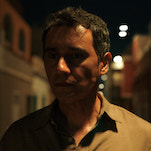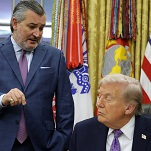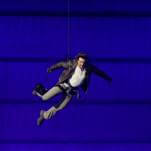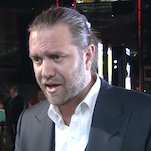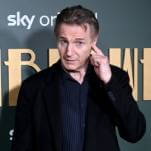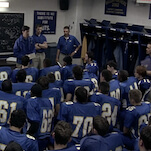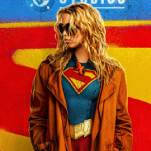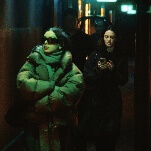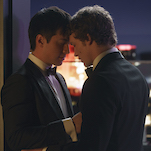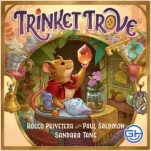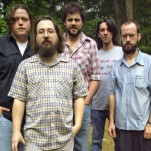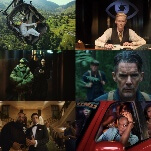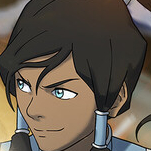Tibet: Cry Of The Snow Lion

Making a political or historical documentary is like navigating a particularly hairy slalom course: It's far too easy to careen toward one pole or another, ending up with a film that's too complex to follow or too simplistic to be credible, so dry that viewers disengage or so emotional that they react skeptically or defensively. With his assured feature debut Tibet: Cry Of The Snow Lion, television videographer Tom Peosay neatly avoids the obvious pitfalls; his documentary lays out Tibetan history and current issues in a direct and organized fashion, pushing the obvious buttons while maintaining a melancholy sense of restraint and dignity. Familiar celebrity activists (Martin Sheen, Tim Robbins, Susan Sarandon, Ed Harris) provide voiceovers and narration to accompany Peosay's collection of archival photographs and film footage, which stretches from China's 1950 military invasion of Tibet to contemporary press conferences and benefit concerts. Peosay only intermittently achieves journalistic objectivity; China's side of the matter comes primarily through brief talking-head snippets with government spokesmen, who react curtly and in brief to charges of genocide, torture, cultural suppression, and ethnic cleansing in Tibet. But Cry Of The Snow Lion is more than an accusatory rap sheet. It attempts to provide a sense of the Tibetan culture and mindset, while also clarifying the country's political and geographical significance as a buffer state between China and India. The depth of Tibet's commitment to Buddhist philosophy–particularly in the wake of China's crackdown on religious expression–is addressed and analyzed, as is the Dalai Lama's role in national and international affairs. Shocking images of Tibetan uprisings and crackdowns, alongside interviews with Tibetans who were imprisoned and tortured for decades, combine to give Snow Lion a great deal of weight, but Peosay's most indelible image comes from a Chinese theme park, where a coin-operated machine shows a plastic, mechanistic version of a massive religious ceremony seen in real life in earlier scenes. Without overemphasizing or baldly stating the point, Snow Lion implies that time is running out, and that within a few decades, the theme-park version of Tibet may have replaced the real one. Peosay sometimes goes too far in his rosy portrayal of the pre-invasion Tibetans as colorful, exotic, idealized innocents in "one of the most spiritual cultures the world has ever known." But overall, his only significant bobble is in the Cry Of The Snow Lion subtitle, which makes his film sound like a toothless, gushy IMAX travelogue instead of the riveting, eye-opening issue film it actually is.





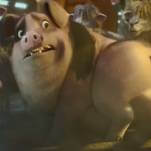
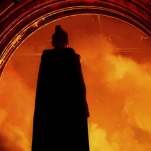

![HBO teases new Euphoria, Larry David, and much more in 2026 sizzle reel [Updated]](https://img.pastemagazine.com/wp-content/avuploads/2025/12/12100344/MixCollage-12-Dec-2025-09-56-AM-9137.jpg)


